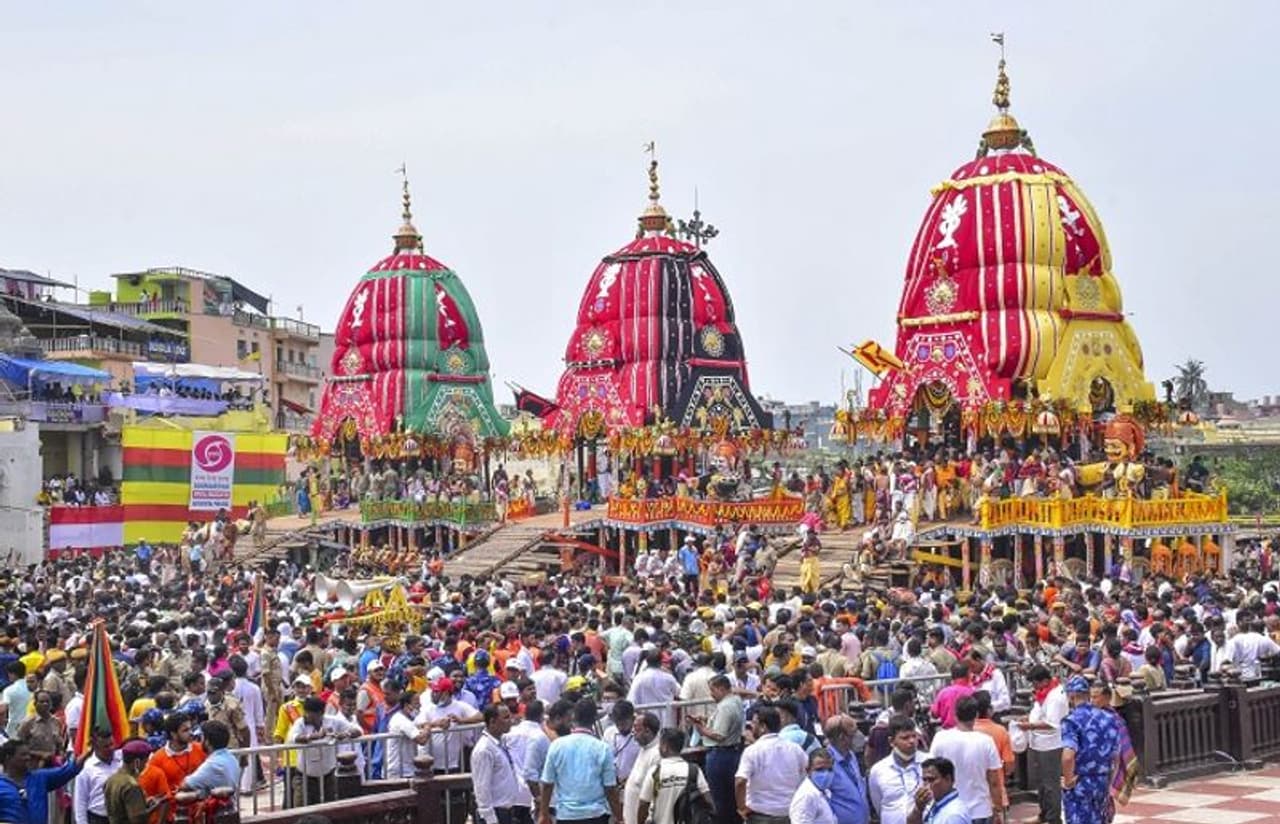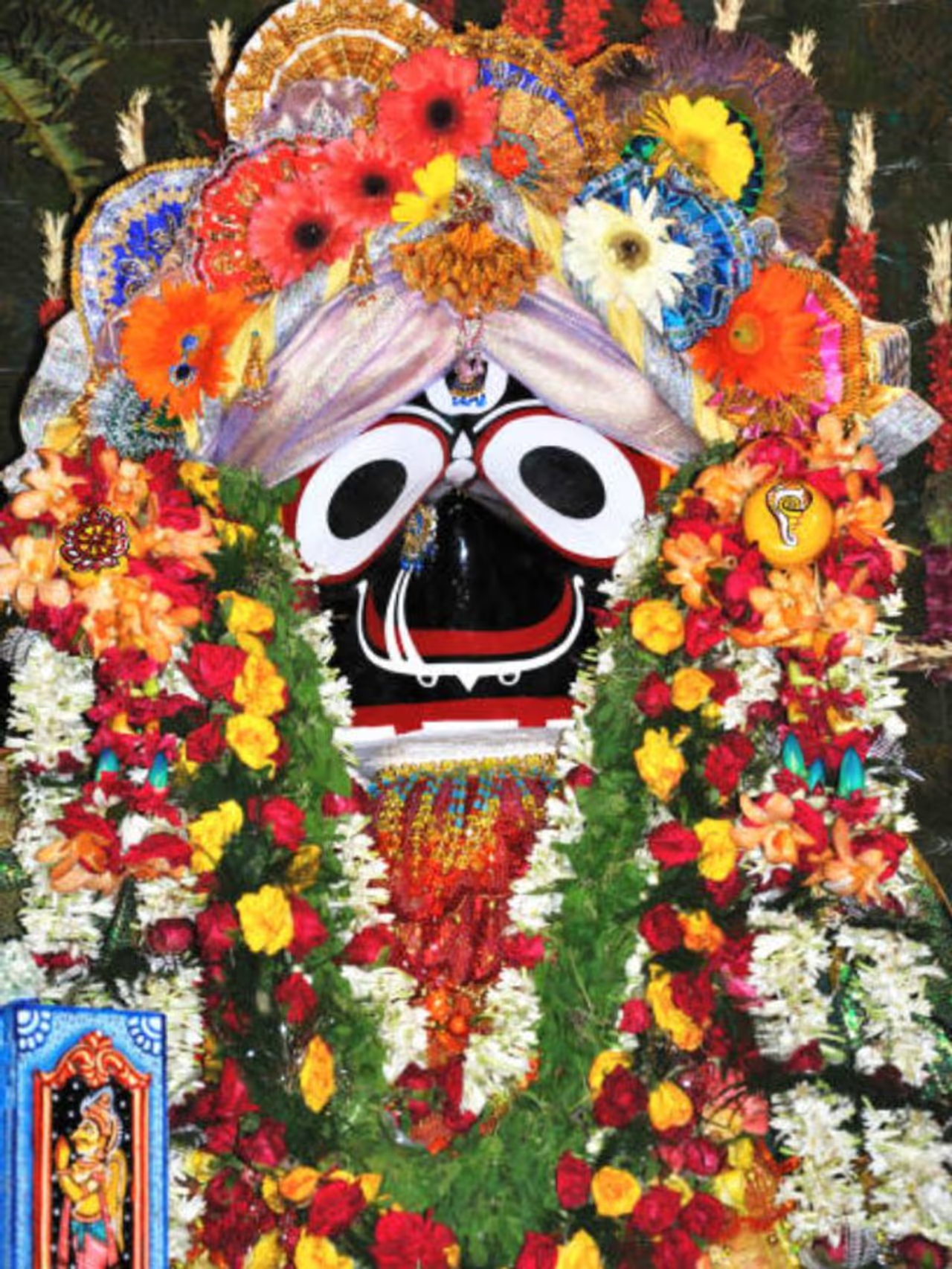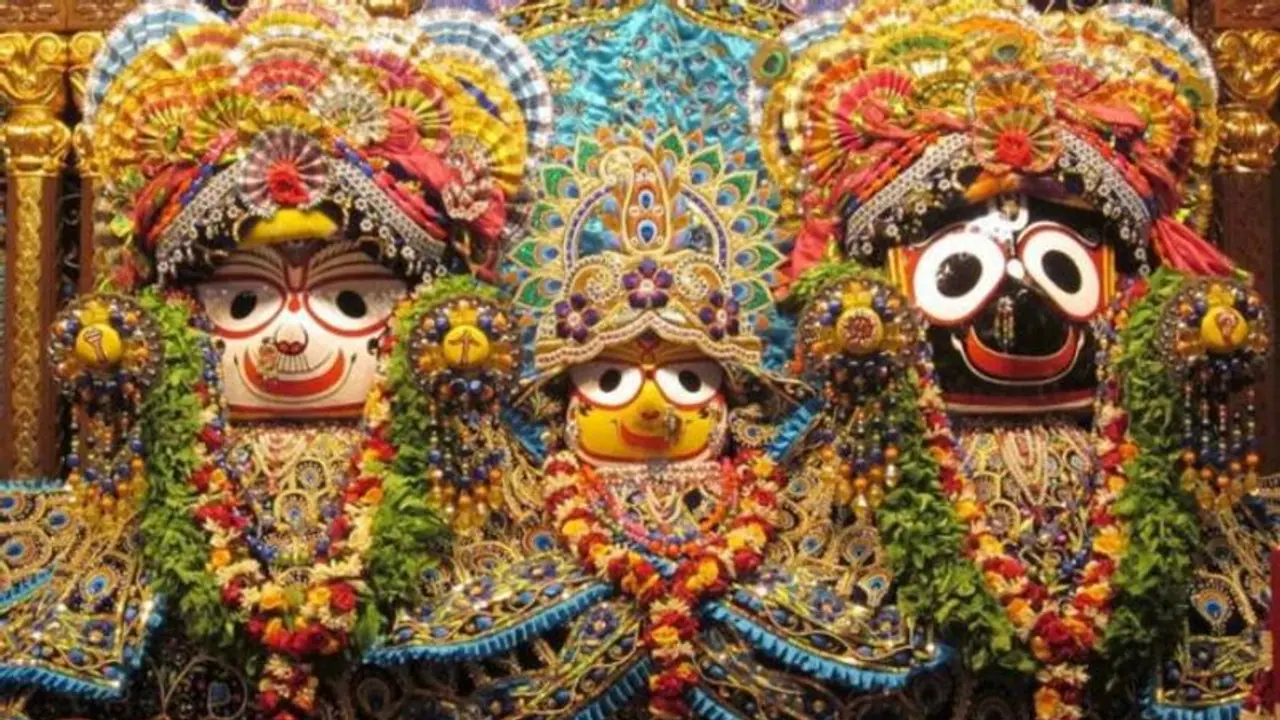The world's largest chariot festival, the Jagannath Rath Yatra is being celebrated today (June 20) in Puri Dham, Odisha. On the Bada Danda, the Grand Avenue, three chariots are displayed in accordance with a special pattern that has been specified and followed for generations. In front of the temple, close to its eastern entrance, also known as the Sinhadwara or the Lion's Gate, the vast avenue is lined with chariots.
The world's largest Jagannath Rath Yatra in Puri Dham is happening today and you should know the rituals that follow it. Three grand and ornately adorned Chariots or Rathas are pulled from the Shri Jagannath temple to the Gundicha temple during the annual Ratha Yatra. The name of Lord Jagannath's chariot is Nandighosa, Lord Balabhadra or Baladev (Balaram)'s chariot is Taladhwaja and their sister Subhadra Maharani's chariot is called Dwarpadalana.

Let's have a look at the rituals that take place on the occasion of Rath Yatra.
Pahandi
After fifteen days of "Anasara" seclusion, devotees catch sight of the Lord in His younger appearance. The Mangalarpana ritual happens on the second day of Ashadha Shukla tithi, after the morning rituals of the gods, such as Mangala Alati, Abakash, Ballabha, and Khechedi bhoga. The four deities take part in the "Pahandi" ceremony, a ceremonial parade, and then consecutively board the holy chariots with other deities.
Chhera Panhara Ritual
The deities are decked with "malachula" and besha on the chariot after being boarded in their separate chariots. The Gajapati performs the Chhera Pamhara rite, which involves moping the chariots in a golden brown colour. A Tamjan (palaquin) transports Maharaja in a ceremonial parade from the Shreenahara (king's palace). Gajapati presents the gods with a golden diya (light) containing a camphor lamp. Alata and chamara rituals follow this. The king uses a golden broom to wipe the chariot's floor before applying sandal paste with a spray bottle.
Pulling of Chariots or Yatra on Bada Danda
After then, the three deities depart from the Shri Mandir and move towards Gundicha. Two kilometres to the northeast of the Jagannatha Temple is the temple. As a result, another name for the celebration is Gundicha Jatra.
The Bhoi sevakas traditionally remove the Charmala from the chariots following the Chhera Panhara. Four wooden horse statues serve as the bindings for each chariot. The kahali servitor plays the trumpet, or kahali. A gong beat follows this. Chariots are then drawn after that. The jester-like minstrel Ratha Dahuk performs a number of songs to get the crowd excited about pulling the chariot. After that, Daitapatis in Pahandi takes the deities in succession to the Simhasana inside the Gundicha Temple, including Lord Sudarshana, Lord Balabhadra, Subhadra Maharani, and Lord Shri Jagannath.
At Bada Danda, countless devotees gather to see this occurrence. In the presence of the Ratha, devotees participate in a massive Sankirtana ceremony. A glimpse of their adored deity, Jaga Kalia (the Dusky Jaga), Chaka Dola (the Round-Eyed one), or Bada Thakura (Great God), is what fuels the zeal of the followers.
The chariots represent Sandhini Shakti, and it is claimed that only by touching them, devotees receive Lord Shree Jagannatha's compassion. In this context, the famous verse reads as follows, "Ratha tu Vamanam drustva punarjanma na vidyate" which means only by seeing the Rath Yatra with Vaamana or Lord Jagannath on it, one will not take birth again in this material world or will be freed from the birth and death cycle.

What's next after reaching Gundicha temple?
Gods' chariots continue to stand in front of the Gundicha temple. The deities then take a bath and engage in other ceremonial activities before retiring for the evening while dressed in a Dashavatar costume. The following evening, the deities travel to the Gundicha Temple with Goti Pahandi and Bije and take up their respective seats.
The fifth day of the Ratha Yatra marks the important festival of Hera Panchami. The Chariots, also known as Dakshina Moda, pivot southward on the sixth day after the Hera Panchami ceremonies.
Bahuda Yatra
The ninth-day deity procession from Gundicha Temple to Shree Jagannath Puri Temple is known as Bahuda Yatra. On Ashadha Shukla Dashami, a Bahuda Yatra is observed with particular rites.
Poda Pitha, a unique variety of pitha (baked cakes or pancakes, common in areas like Odisha, West Bengal, and Assam), is offered to the deities at Mausi Maa Mandira on the way back to Shri Mandira. It is an Odia delicacy composed of rice, urad dal, coconut, jaggery, and nuts. Also performed during the Bahuda Yatra is the Laxminarayan Bheta ceremony.

Suna Besha
On Ashadha Shukla Paksha Ekadasi Tithi, this ritual is performed after Madhyanna Dhupa (midday bhoga). The gods ride chariots while wearing gold jewellery during Mahaprabhu's Suna Besha.
Adharpana
Ashadha Shukla Dwadashi sees the performance of the Adharpana rite, which comes after the Suna Besha. Near the lips of the three deities were nine earthen pitchers filled with drinks. Then the Daitapatis and Sevaks collide and spill the pitchers on the Rathas. It is claimed that numerous ghosts and spirits accompany the Lords throughout the Rath Yatra in expectation of drinking the sacred drink to find salvation.
Niladri Bije
On Asadha Trayodashi, the deities are restored to the Ratna Bedi (the pedestal in the main temple where the four idols sit facing east), marking the festival of Niladri Bije. Lord Jagannath offers Rasagullas to Goddess Lakshmi as a way of pampering Her to let him into the temple, as the Lord was away from Her for a few days.
